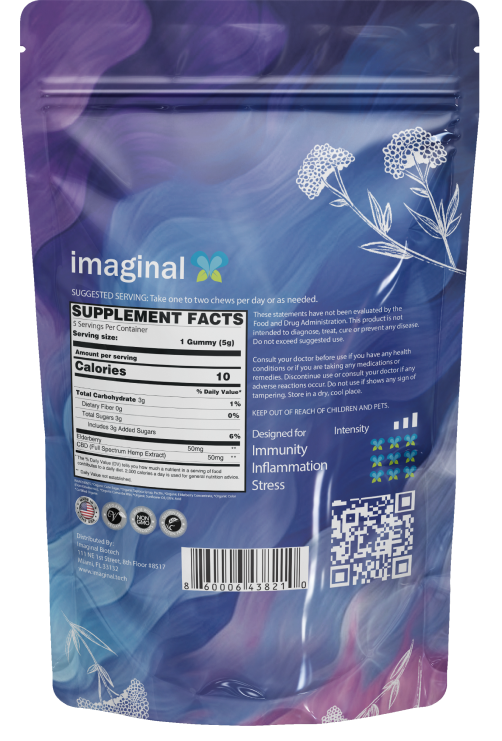This is the second article in our series on curcumin. If you haven’t had a chance to read the first article in this series, click here.
Have you ever stopped to wonder how our bodies work? They are marvelous feats of biology and engineering that scientists are still working to understand. We are continually learning new things about our bodies, but at the same time, there is a lot we do not know.

That’s what draws people to science, despite how many questions we answer, there will always be unsolved mysteries. And sometimes, when you think you’ve solved a mystery, a new answer pops up in an unexpected place.
One of the questions scientists are working to answer is, “How can we improve our immune system?” And in this article, we are going to look at that question and one of the answers that have gained popularity in recent years, curcumin.
Let’s dive in.
What is the immune system?
Before we look at how to improve the immune system, we need to understand what it is.
The immune system is one of the body's most essential systems, a system made up of various structures and processes that work together to protect the body from diseases. It protects the body by identifying pathogens (disease-causing microorganisms), distinguishing them from the body’s own structures, and working to eliminate them.
To ensure efficient elimination of these pathogens, our bodies have developed a strategy known as the layered defense.
What is the layered defense?
The layered defense is an evolutionary adaptation developed by our immune systems to protect us from pathogens. Using this strategy, the immune system responds to threats in a layered way, with each layer increasing in specificity.
Here’s is how it works:
- The skin is our first layer of defense. It acts as a physical barrier preventing pathogens from entering into our bodies. If pathogens manage to bypass the skin, it triggers the next layer of defense.
- The next layer of defense is the innate immune system. This provides an immediate response but one that is non-specific. If the innate immune system is unable to get rid of the pathogen, it triggers the next stage.
What is the difference between the adaptive and innate immune systems?
Now that we are a little familiar with the layered defense strategy, let’s look at its two main components:
- The innate immune system
- The adaptive immune system
To fully appreciate the difference between them, we need to look at how they function and their constituent parts.
The Innate Immune System
The innate immune system is simply the immune system that you are born with. It is comprised of:
- Surface barriers- These are barriers that protect the body from invasion by pathogens. They include chemical, mechanical, and biological barriers.
- Pattern recognition receptors- These are receptors that recognize molecular structures produced by pathogens.
- Cellular components- These are leukocytes, more commonly known as white blood cells. The innate leukocytes are phagocytes, natural killer cells, basophils, mast cells, and eosinophils.
- Complement system- A signaling cascade that attacks the surface of foreign cells.
- Inflammation- It is one of the first responses of the innate immune system to irritation or infection. It is stimulated by chemicals released by infected or injured cells. Inflammation serves two main purposes: to establish a physical barrier preventing the spread of infection and to promote the healing of damaged cells and tissues.
When the innate immune system responds to a pathogen, it’s response is non-specific. This means that the response is not tailored to a particular pathogen but is more of a general attempt at protecting the body.
The adaptive immune system
The adaptive immune system is the second subset of the body’s immune system. It allows for a stronger, more specific reaction to a pathogen as well as immunological memory. Unlike the innate immunity, which someone is born with, adaptive immunity is acquired through exposure to various pathogens.
The adaptive immune system is antigen-specific, and for it to be triggered, specific antigens have to be detected. When these antigens are detected, the adaptive immune system is able to generate a tailored response to the infection.
The adaptive immune system has fewer components than the innate immune system. These include:
- B Cells- These are cells that are formed and mature in the bone marrow. They move into the lymphatic system and circulate throughout the body. These cells express antibodies on their membranes.

- T cells- They are also made in the bone marrow but move to the thymus to mature. T cells have three primary receptors, T cell receptors, CD4 receptors, and CD8 receptors. Every T cell will have a T cell receptor and either the CD4 or CD8 receptor, but not both.

Where does curcumin fit in?
Now that we know a little bit more about how the immune system works let's look at how curcumin affects it. But before we get to that, let’s look at what curcumin is.

What is curcumin?
Curcumin is a compound that is bright yellow and produced by the Curcuma longa plant. It belongs to a group of compounds known as curcuminoids and is the primary curcuminoid of the turmeric plant. It is also the plant's principal active compound.

Scientists have discovered that curcumin has several characteristics such as
- cholesterol-lowering
- anti-diabetic
- anti-inflammatory
- anti-oxidant
- anti-bacterial
It is these properties that made scientists curious about curcumin’s effect on the immune system.
So what does science say about curcumin and the immune system?
To quote the scientists, “Curcumin spices up the immune system.” But the question is, how does it do this?
In a 2007 paper published by a team led by Ganesh Chandra Jagetia, the team explained that apart from curcumin having anti-inflammatory properties, it also had an immunomodulatory effect. Immunomodulation is the process by which agents activate or suppress parts of the immune system, causing a change in how it functions.
In the paper, the team explained that curcumin could modulate the activation of the following:
- T-cells
- B-cells
- Macrophages
- Neutrophils
- Natural killer cells
- Dendritic cells
They further explained that curcumin could also downregulate the expression of various proinflammatory cytokines and chemokines. Another observation that the researchers made was that in low doses, curcumin enhanced the response of antibodies.
From this, the researchers posited that curcumin’s reported benefits such as in treating arthritis and asthma might be because of its ability to modulate the immune system. They concluded by saying that these findings warranted further consideration of curcumin as a therapy for immune disorders.
The immunomodulatory properties of curcumin were also studied in a 2017 paper published by a team led by Momtazi-Borojeni. In this paper, the researchers were looking at the modulation effects of curcumin on immune cells in systemic lupus erythematosus.
In a 2018 paper, a team led by Michele Catanzaro analyzed the various literature on the immunomodulatory and anti-inflammatory properties of curcumin. They published a table on the significant anti-inflammatory and immunomodulatory effects of curcumin, and you can find it here.
In the paper, they also identified the limitations facing the therapeutic use of curcumin. Some of these challenges include:
- Its low bioavailability
- Its chemical instability
- its toxic profile under certain experimental settings
The researchers also proposed several methods to overcome these limitations, and they include:
- Different formulations,
- Changes in the way of administration,
- The development of nanotechnology-based delivery systems
The researchers believed that making use of these advances can improve the therapeutic efficacy of curcumin and give new hope for its clinical application.
Final thoughts on curcumin and the immune system
There is a lot of optimism among members of the scientific community on the effectiveness of curcumin in boosting the immune system. And it's easy to see why.
However, before curcumin can become more widely accepted as an immunity booster more research needs to be done. And we will be here to inform you of any new developments in curcumin research.
In the next part of this series, we will look at how curcumin affects the cardiovascular system. That’s one that you won’t want to miss. 




